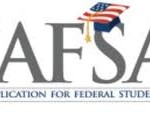Most Florida High School Graduates Have Not Applied For College Financial Aid This Fall

Jewel Samad / Getty Images
College debt is a major theme among the Occupy Wall Street movement protests, such as this one last November in Washington, D.C.
More than 60 percent of Florida high school graduates have yet to apply for federal financial aid.
That’s according to an analysis by the Florida College Access Network (Florida C.A.N.!), which found that just 38 percent of high school seniors completed the Free Application for Federal Student Aid (FAFSA) by early June for the upcoming academic year.
The U.S. Department of Education unveiled the FAFSA Completion Tool website a few months ago to track information about applicants around the country.
Reasons for not applying include confusion over eligibility, fear of more debt and lack of information about the application process according to Florida C.A.N.
Florida C.A.N. underwrites StateImpact Florida’s coverage.
Even the best deals for college cost a lot of money.
Numbers released in a national report this week show the average cost to complete a degree at a four-year public university in Florida is $46,071. That’s the lowest in the country. But plenty of Florida students will borrow money to pay for it.
The FAFSA form is necessary for Pell grants, federal loans and work-study programs. It’s also commonly used for state and university aid, as well as scholarships.
Public universities in Florida have more than 329,000 students enrolled for the current academic year. Many of them received Bright Futures scholarships. These are merit based scholarships funded by the Florida lottery. Anyone hoping to participate in Bright Futures this fall will need to fill out a FAFSA by August 31st.
The form provides “valuable information to university financial aid officers about student eligibility for many different types of aid,” according to BOG spokeswoman Kelly Layman. “It is to the student’s benefit to complete a FAFSA as soon as possible, since some aid is generally on a ‘first come, first served’ basis,” said Layman.
But filling out a FAFSA isn’t easy.
First you have to go online or request a paper copy.
And the FAFSA requires a long list of the documents, including:
- Social Security card.
- Driver’s license, if applicable.
- Current bank statements.
- The previous tax year’s W-2 forms and other records of money earned.
- The previous year’s Federal Income Tax Return.
- Any foreign tax return or tax return for certain U.S. territories, such as Guam.
- Students who are claimed as a dependent must show their parents’ most recent Federal Income Tax Return.
- Any of the student’s current business and investment or mortgage information, stocks, bonds and similar records.
- Non-citizens must show an alien registration or permanent resident card.
Be sure not to make any mistakes because that could mean losing access to financial aid.
Some parents have complained about the new FAFSA requirements, worrying about identity theft from submitting their Social Security number electronically. Likewise, parents have asked why the state and federal government need their financial information if their child is paying for college (FAFSA requires a parent’s financial information for students under the age of 24)?
Florida Board of Governors Chair Dean Colson said this form is crucial for students seeking any financial aid.
“With so many federal, state and local entities utilizing the same methodology, I urge every student and family to avail themselves of this opportunity to maximize their potential financial assistance,” said Colson.

